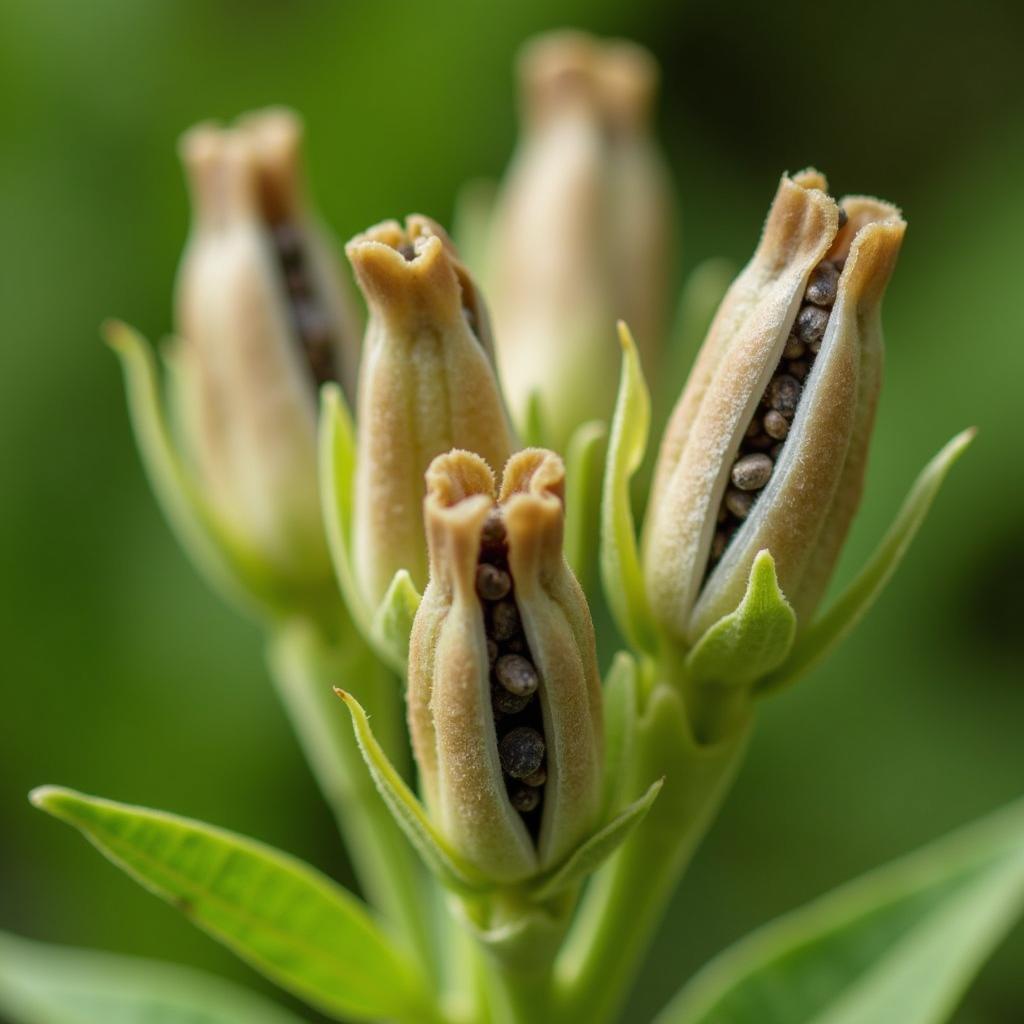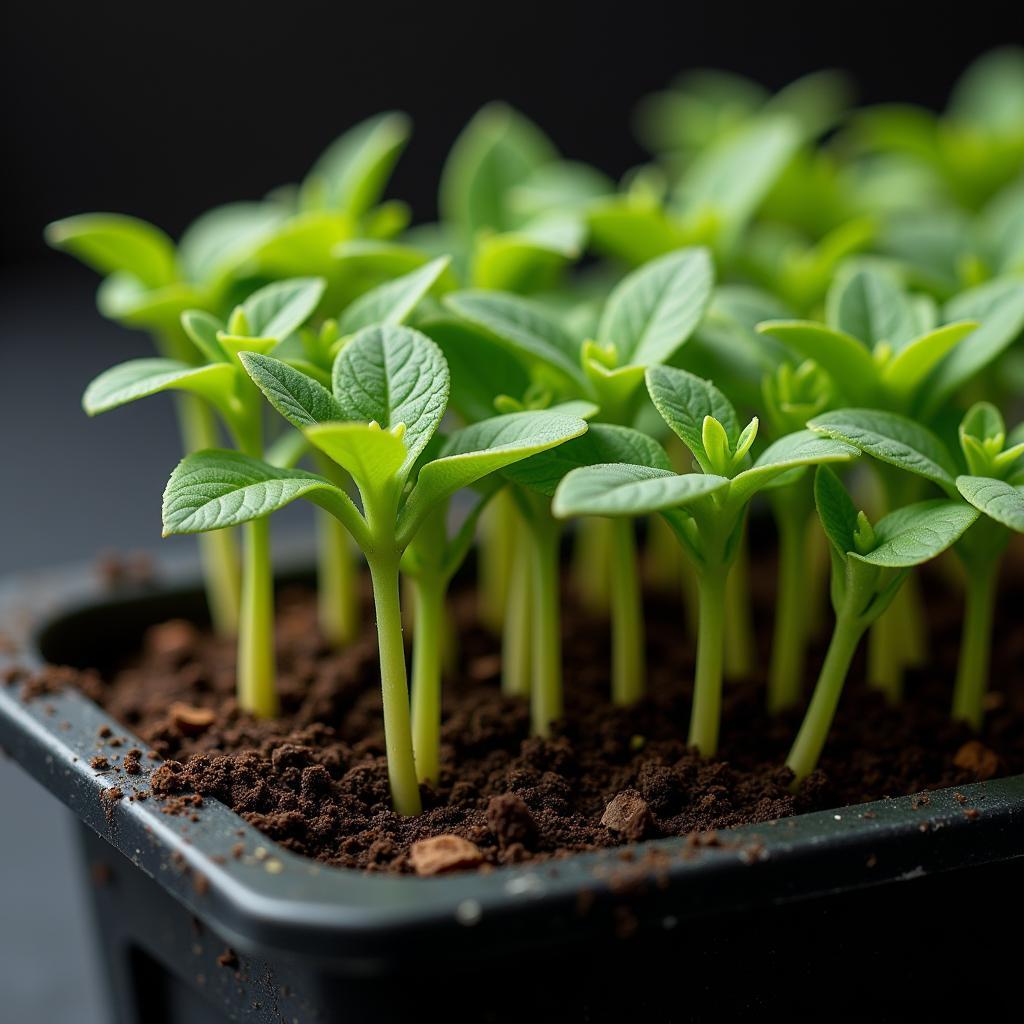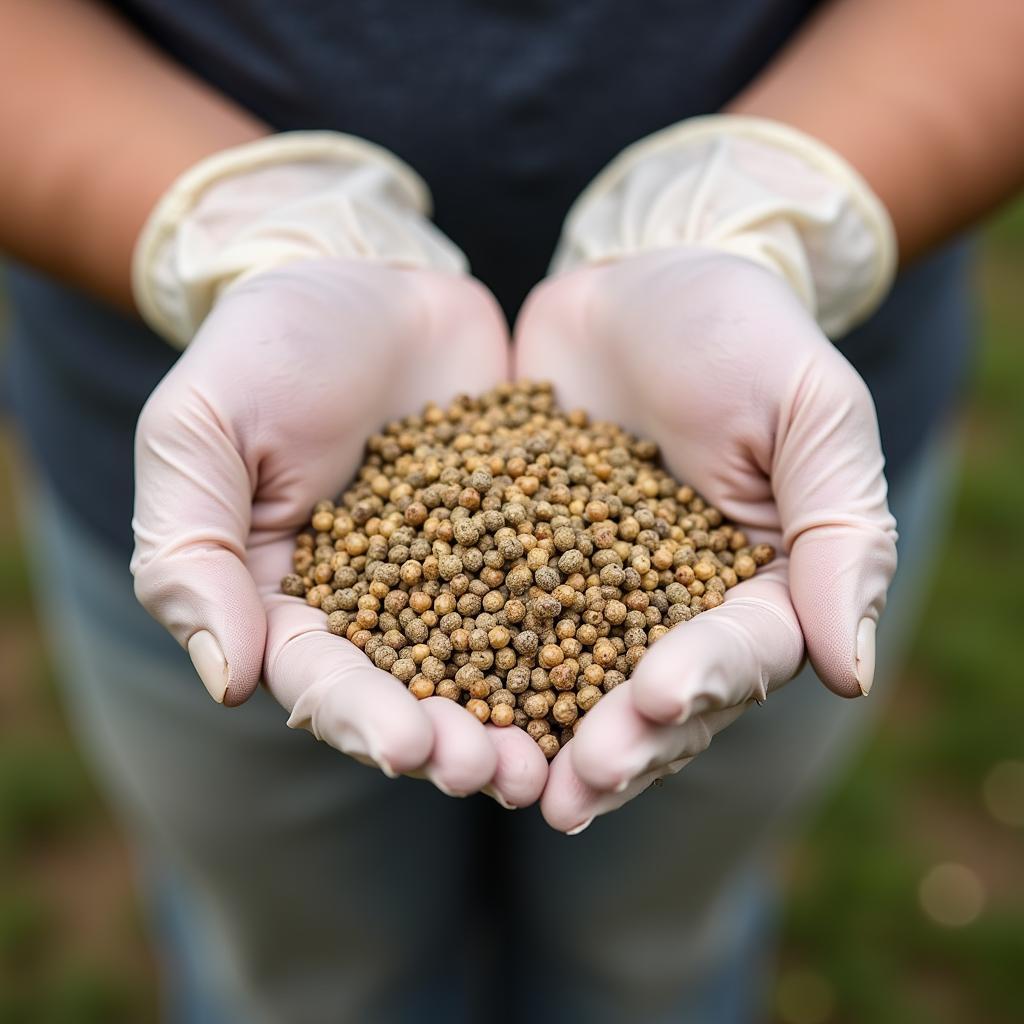Wolfsbane Seeds are a fascinating and often misunderstood element of this intriguing plant. This guide will delve into their characteristics, cultivation, uses, and precautions. We’ll explore everything from their appearance to the myths and legends surrounding them.
Understanding Wolfsbane Seeds
Wolfsbane, also known as monkshood or aconite, is a perennial herbaceous plant belonging to the buttercup family. It’s renowned for its striking blue, purple, or sometimes white flowers and its highly toxic properties. These properties stem from alkaloids, primarily aconitine, concentrated in the roots and, significantly, the seeds. Understanding the nature of wolfsbane seeds is crucial for safe handling and cultivation. Where to buy wolfsbane is a common question, and we’ll address that later.
The seeds themselves are small, black, and irregularly shaped, often described as resembling tiny, wrinkled pebbles. They develop within pod-like follicles that form after the plant flowers. These follicles typically contain numerous seeds, which are dispersed naturally when the pods dry and split open. It’s important to handle both the pods and seeds with care, wearing gloves to prevent accidental contact with the skin.
 Wolfsbane Seed Pods Closeup
Wolfsbane Seed Pods Closeup
Cultivating Wolfsbane from Seed
While growing wolfsbane from seed can be rewarding, it requires patience and careful attention. The seeds have a natural dormancy period, mimicking the winter conditions they would experience in their natural habitat. This dormancy requires a period of cold stratification to break, triggering germination. This process involves storing the seeds in a moist medium at a low temperature (around 4°C or 39°F) for several weeks before sowing.
Sowing the seeds in well-draining soil and providing them with consistent moisture and partial shade is crucial for successful germination. Germination rates can be variable, and it’s often advisable to sow multiple seeds to increase the chances of success. Remember, consistent moisture doesn’t mean waterlogged soil; proper drainage is vital to prevent root rot.
 Young Wolfsbane Seedlings
Young Wolfsbane Seedlings
The Uses and Legends of Wolfsbane Seeds
Historically, wolfsbane seeds, like other parts of the plant, have been used for various purposes, primarily due to their potent toxicity. In ancient times, they were used to poison arrows and spears for hunting and warfare, earning the plant its ominous name. Folklore is rife with tales of wolfsbane being used to ward off werewolves and other mythical creatures, adding to its mystique. Find more information about grim reaper plants.
While traditional uses are now largely obsolete due to the inherent dangers, there are ongoing investigations into the potential medicinal applications of aconitine, the primary alkaloid found in wolfsbane seeds. However, it’s crucial to emphasize that any use of wolfsbane for medicinal purposes should only be under the strict supervision of qualified medical professionals. Self-medication with wolfsbane is extremely dangerous and can be fatal.
Safety Precautions When Handling Wolfsbane Seeds
Given the highly toxic nature of wolfsbane seeds, handling them requires extreme caution. Always wear gloves when working with any part of the plant, including the seeds and seed pods. Avoid touching your face or eyes, and wash your hands thoroughly after handling the seeds. Keep the seeds out of reach of children and pets. Understanding where can you buy wolfsbane from reputable sources is important, as this can help ensure proper labeling and safety information. Learn more at where can you buy wolfsbane.
Conclusion
Wolfsbane seeds, with their potent properties and rich history, are a compelling subject. While their toxicity demands respect and careful handling, understanding their characteristics and cultivation allows us to appreciate the unique aspects of this fascinating plant. Remember to prioritize safety and always seek professional guidance for any potential uses beyond ornamental gardening. For information on obtaining wolfsbane, visit where to buy wolfsbane.
FAQ
- Are wolfsbane seeds poisonous? Yes, extremely.
- How long do wolfsbane seeds take to germinate? Germination can be variable, often taking several weeks after stratification.
- Can I grow wolfsbane indoors? Yes, but ensure proper ventilation and keep it away from children and pets.
- What are the medicinal uses of wolfsbane seeds? While traditional uses exist, modern medicine is still exploring potential applications under strict professional oversight.
- Where can I buy wolfsbane seeds? Reputable nurseries and seed suppliers are your best bet.
 Handling Wolfsbane Seeds Safely
Handling Wolfsbane Seeds Safely
Do you have other questions? Explore our other articles on poisonous plants and safe gardening practices.
Need assistance? Contact us:
Phone: 0902476650
Email: [email protected]
Address: 139 Đ. Võ Văn Kiệt, Hoà Long, Bà Rịa, Bà Rịa – Vũng Tàu, Việt Nam.
We have a 24/7 customer support team.





